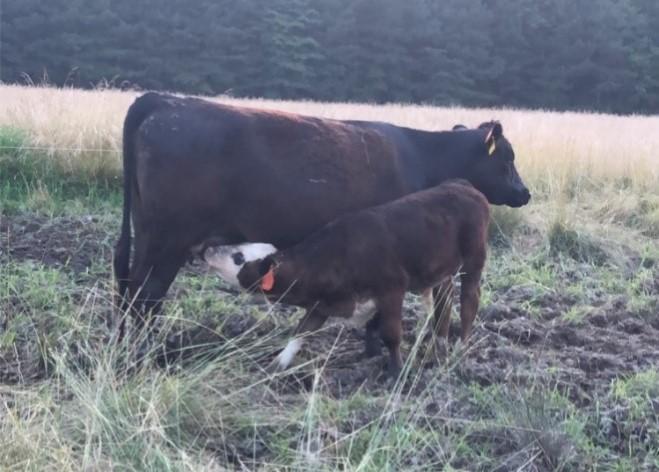Weaning Tips and Vaccination Programs for Beef Calves
WEANING
Weaning is one of the most stressful times for calves, and it doesn’t help that it’s also the most common time to give vaccinations. No one wants to work their cattle more than necessary.
The WHEN of weaning
Generally, 6-8 months of age; though calves can be weaned as young as 3 months. As long as your cows have good body condition and you have ample feed, there is really no reason to wean early. In Maryland, the majority of farms wean in the fall: September through early November.
The HOW of weaning
There are 3 methods of weaning commonly used in the beef industry. Each method has pros and cons, the key is finding the best one that suits your farming operation and the cattle market in your region.
VACCINATIONS
The WHY of Vaccines
In the beef industry, we operate on tight margins and while $3-10 per animal (depending on the vaccination program you choose) may seem like a lot, especially when you factor in the labor of catching your cattle and running them through the chute, it’s really not. Especially when a sick animal happens – and it will. The amount of time and money it will take to save that animal, not including the total loss if they don’t make it, will be exponentially larger. Vaccinating animals are a requirement of many cattle programs, including USDA Certified Organic, as well as many extra premium programs at livestock sale barns. An ounce of prevention will beat a pound of cure every time.
| WEANING METHOD | PROS | CONS |
|---|---|---|
| Total Separation |
|
|
| Fence-line |
|
|
| 2-Stage |
|
|
The WHAT and WHEN of Vaccination Programs
| WHAT YOU'RE VACCINATING FOR* | WHEN TO ADMINISTER** |
|---|---|
| IBR-BVD-PI3-BRSV-Lepto 5 Way (Infectious Bovine Rhino-tracheitis, Bovine Viral Diarrhea, Parainfluenza-3, Bovine Respiratory Syncytial Virus, 5 Strains of Leptospirosis) |
|
| Clostridial 7 way (Blackleg, Malignant Edema, Enterotoxemia types B, C, and D) |
|
| Mannheimia haemolytica (Bacteria responsible for Shipping Fever Pneumonia which usually follows infection of a respiratory virus) |
|
| Histophilus somni (Bacteria that can cause respiratory, nervous system, and reproductive diseases) |
|
| IBK (Infectious Bovine Keratoconjunctivitis or Pinkeye) |
|
*Commonly recommended. Always consult with your veterinarian about what you should be vaccinating for based on area you live in and pathogen risks that may exist such as Anaplasmosis, Anthrax, Brucellosis, etc.
** Immune response to vaccines aren’t immediate and they are can be found lacking when used on unhealthy or stressed calves, particularly during weaning. Vaccines efficiency is highest when they are used 2-4 weeks PRIOR to weaning when the calf is still with mom in a familiar environment.
| TYPE OF VACCINE | PROS | CONS |
|---|---|---|
| Modified Live Vaccine (MLV) |
|
|
| Killed Vaccines and Toxoids (KV) |
|
|
| Chemically Altered Vaccines (CAV) |
|
|
The HOW of vaccines
There are 3 types of vaccines commonly used in the beef industry. Each has pros and cons, the key is finding the best one that suits your farming operation. Again, always consult with your veterinarian when making decisions about vaccine use on your farm.
Pre-weaning, including following a vaccination program, is essential to help your calves make the transition that’s going to help determine not only their short-term health but their long-term health, growth performance potential and your economic viability. Make sure you’re keeping your cattle and farm on the right path forward.
Vaccination Program Resources
- Texas A&M Agrilife Extension has a handing guide that walks you through several vaccination programs: Beef Cattle Vaccination
- Iowa State University, Beef and Diary Vaccination Programs, Fact Sheet IBC 111
This article appears in August 2021, Edition 2, Cattles Tales Livestock Newsletter
